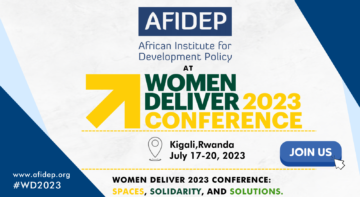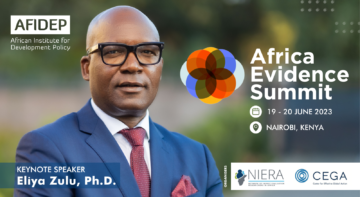Blogs

The population of Kenya is projected to grow from 47.6 million in 2019 to 66 million in 2030, according to the Kenya National Bureau of Statistics (KNBS) and UN World Population Prospects 2019. This growing population is expected to become increasingly urban, more concentrated in working ages, and how climate change will impact livelihoods and food security.
In a keynote presentation at the ongoing 4th National Leaders’ Conference on Population and Development hosted by the Kenya State Department for Planning – National Treasury and Planning through the National Council for Population and Development (NCPD), Dr. Eliya Zulu, Executive Director at AFIDEP discussed the nexus between population and development and implications for Kenya’s growth. With the theme Harnessing Population Dynamics to Achieve Kenya Vision 2030 and Sustainable Development Goals: Challenges and Opportunities Dr Zulu emphasised the need to place population at the centre of development. “We need to work towards a population age structure with more people in the workforce and less dependents,” he said. “At the same time, there is need to equip youth with the skills and resources they need to enable them to contribute meaningfully to economic growth.”
The demographic dividend refers to the accelerated economic growth that is initiated by a rapid decline in fertility and mortality that results in a change in the age structure from one dominated by child dependents to one dominated by economically productive working-age adults.
According to the Kenya Population and Housing Census 2009 and 2019, Kenya’s population age structure is in the early stages of changing from one dominated by child dependents in the 0-9 age range, to one with a bulge in the 10-14 age range whom if well invested in, could become economically productive adults. Dr Zulu however noted that there were disparities between counties and urged county governments to prioritise the population agenda in their development plans. “Kenya is best placed to harness the demographic dividend so long as the correct investments are made,” he said and made a strong call for a shift from policy formulation to implementation while being guided by strong evidence to inform action.
According to the Kenya National Bureau of Statistics (KNBS), 2.7 million young people aged 15-34 were not in education, employment or training by the fourth quarter of the year 2020. This threatens the likelihood of Kenya reaping a demographic dividend, hence the need to step up efforts to re-skill the current youth who are not in education, employment or training (TVET).
Dr. Zulu’s presentation highlighted the areas that Kenya need to invest to optimize its human capital to accelerate the achievement of Vision 2030 and SDGs. These include family planning and reproductive health; education and skill development; urban renewal; integrate population, environment and development; and, evidence for accountability.
Speaking on day 2 (27 May) of the conference under the “Population Size, growth and Age Structure” theme, AFIDEP’s Dr. Bernard Onyango, Senior Research and Policy Analyst, underscored that the “key drivers of the demographic dividend are under threat as a result of COVID-19.” In his presentation, “Priorities for #Kenya to Harness the Benefits of its Changing Age Structure”, Dr. Onyango illustrated that the increased challenges by the long term impact of the coronavirus pandemic in education, employment, health and inequality threatened the governments’ capacity to effectively support harnessing the demographic dividend. Protecting the vulnerable from the long-term impact of COVID-19 is key in Kenya and the continent’s ability to harness the demographic dividend. He also mentioned the need to “adapt to the future of work, which is changing rapidly,” and to also invest in enhancing the development and use of digital technologies.
Another key population area that AFIDEP experts presented on was under the theme of “Population Human Settlements and Environment”. In her address on day 2 (27 May) of the conference, Dr. Doreen Othero, Senior Research and Health Analyst, discussed if the Population, Health and Environment (PHE) approach could be a solution to sustainable human settlement in Kenya. She explained that PHE programming seeks to simultaneously improve access to health services while also helping communities manage their natural resources (including settlement) in ways that improve their health and livelihoods and conserve the critical ecosystems that they depend upon.
The conference was officially opened by Amb. Ukur Yatani, Cabinet Secretary for National Treasury and Planning in Kenya, and featured a panel discussion with County Government leadership.
The three-day virtual leader’s conference (26-28 May 2021) sought to deliberate and document a consensus on the draft National Population Policy. The conference theme was “Investing in human capital for achievement of Kenya’s Vision 2030.”
Related Posts





